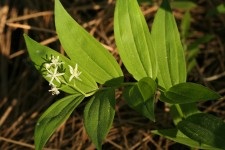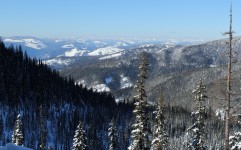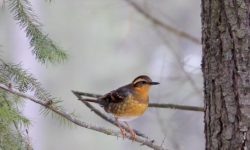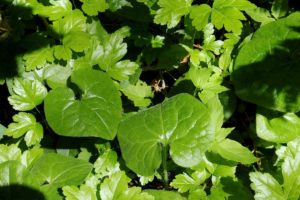
Low-lying plants are easy to miss especially when they don’t have vibrant flowers or berries to attract your attention. A few years ago I discovered wild ginger when a friend showed me the heart-shaped leaves. When crushed, the six-inch heart-shaped leaves release a strong scent of lemon-ginger–even in winter.
Every since then, I’ve looked for wild ginger alongside trails in moist, shaded forests like the Ross Creek Cedars. I tend to notice wild ginger the most in spring just after the snow melts because it’s an evergreen perennial that stays green year-round. The older leaves aren’t as dark green as the new leaves but they retain their heart-shape.

Wild ginger can form large mats because they spread by rhizomes. At the tip of the rhizome the purplish-brown bell-like flower grows, often hidden beneath the leaves. Wild ginger flowers between April and July depending on location. The wild ginger (Asarum caudatum) in our region–Idaho, western Montana, British Columbia, Washington, Oregon and California–is commonly referred to as British Columbia wild ginger or long-tailed ginger.
Wild ginger also grows from seeds with ants helping to disperse them. The seeds have a fleshy appendage with a certain oil that attracts ants. Ants bring seeds to their nest, eat the fleshy appendage and discard the seed which then can germinate if conditions are right.
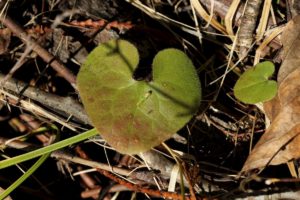
While ants may eat parts of the seed, people use other portions of the plant. The roots are edible when fresh or dried and can be a ginger substitute when ground. Native Americans used wild ginger for many medicinal uses and they mixed it with sphagnum moss for infant bedding. Also, pocket gophers and other rodents feed on the wild ginger fruits which are capsules that contain the seeds.
Wild ginger is a shade-loving plant so if you find trilliums, foam flowers or ferns, take a look for wild ginger and enjoy the smell.

